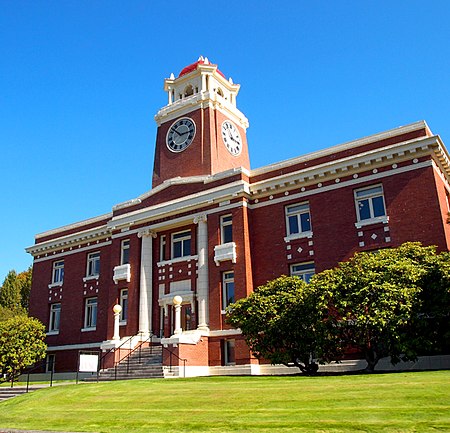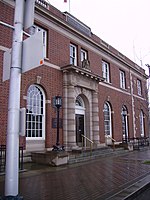Clallam County, Washington
1854 establishments in Washington TerritoryClallam County, WashingtonPages with non-numeric formatnum argumentsPopulated places established in 1854Use mdy dates from December 2021 ... and 3 more
Washington (state) countiesWashington placenames of Native American originWestern Washington

Clallam County is a county in the U.S. state of Washington. As of the 2020 census, the population was 77,155, with an estimated population of 77,805 in 2022. The county seat and largest city is Port Angeles; the county as a whole comprises the Port Angeles, WA Micropolitan Statistical Area. The name is a Klallam word for "the strong people". The county was formed on April 26, 1854. Located on the Olympic Peninsula, it is south from the Strait of Juan de Fuca, which forms the Canada–US border, as British Columbia's Vancouver Island is across the strait.
Excerpt from the Wikipedia article Clallam County, Washington (License: CC BY-SA 3.0, Authors, Images).Clallam County, Washington
West 9th Street,
Geographical coordinates (GPS) Address Nearby Places Show on map
Geographical coordinates (GPS)
| Latitude | Longitude |
|---|---|
| N 48.1125 ° | E -123.44083333333 ° |
Address
West 9th Street 155
98362
Washington, United States
Open on Google Maps










